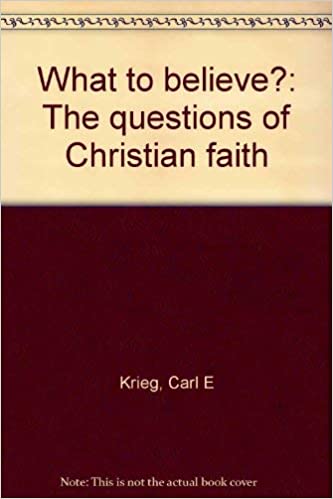Fifty Years Later – Part 10
Who was Jesus?

Part 10: Who was Jesus?
The question Who is Jesus? is perhaps the most complex issue in Christian theology, embracing, as it does, three interrelated sub-questions: who was he in his person, what did he do, and how does that impact us today? At various times in history, people have been persecuted and mercilessly killed for having an answer that did not comply with locally accepted belief. Who was he- man? god? in one person? How? What did he do? teach? die for others’ salvation? appease God’s wrath? And whatever he did, how does that affect us today, or any day? by believing? by partaking in the mass? Fifty years ago I was convinced that whoever Jesus was and whatever he did, it was not his death that defined the man and his life. Stated positively, and quoting from What to Believe?, “We saw earlier that the death of Jesus had nothing to do with the new life the disciples found in him. Now we must see that the same is true for us. Remembering that we are speaking from within the community of those who have been affected by what Jesus did, we can say that although the physical Jesus is not with us, the memory of him lives on in the story passed down to us, and it does so within a community of those who seek today to be his disciples as did those of yore. We have the capacity both to be encountered by the risen Christ, and also to be nurtured in the community of faith. And that is no more and no less than what was available to the earliest followers of the man. We are in the same position as the first disciples, the only difference being they had a flesh and bones man, and we have a flesh and bones story about that man and the living, risen spirit of that man. I think it works out about equal.”
Today
Today I think that the three questions are still very much three questions, and my answer today is not a whole lot different from earlier, although things have shifted a bit. Utilizing the experiences of humankind as outlined in the chapter What is Man?, we can describe a few characteristics of Jesus. Contrary to the rest of us, he was not egocentric and did create his own little world. He was continually open to perceive the needs of others and to love them accordingly. His life was a continual moment, always aware of the divine Presence. As a result, he did not experience the Void and did not question the meaning of life. He lived it. And lastly, he interacted with others and had his disciples for a family of friends, for whom he cared and with whom he shared. The real question is not how he was both human and divine, but how and by what power he was able to live as he did, a non-egocentric loving person. That is the real mystery, and mystery it is.
What he did, did not involve some special teaching unique to him, which was no different from other versions of the golden rule, nor did it involve a sacrificial death, which is a horribly ridiculous thought, but he embodied the essence of what it means to be a true and loving human being. It was this embodiment that transformed the women and men who were with Jesus from followers into disciples, an excited group who were born anew and determined to share that newness with everyone. They told the story of how they had come to see the light.
That’s who he was and what he did. What remains is to understand how that insight comes to us today, and I think the answer is quite comparable to what it was fifty years ago. It begins with the understanding that those “moments” we experience in life are encounters with a Transcendent Presence seeking to lead us out of our self-centeredness. This understanding comes to us through the experience that the disciples share with us, a word, a witness that this newness actually happened to them. This word is not isolated, but a word that is manifest in a living community with others who share the newness. Furthermore, as the disciples experienced the living Christ in their midst, so we today experience the same living Christ. This experience transcends the type of knowledge to which we have become accustomed, being of a different order, but real nonetheless.
Who was Jesus? A true human being. What did he do? He enabled the disciples to also become truly human. How does what he did impact us today? Through the story, the community, and the living presence of the risen Christ, also called the Spirit of Christ, the Holy Spirit.
For a final note, this is not at all to say that this awareness is limited to Jesus and those inspired by him, but rather that what Jesus bequeathed was and is Reality. This Reality is found wherever you find it, and it will not contradict what we know in Jesus.

